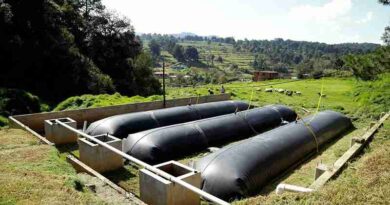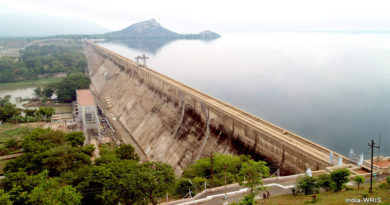Water Footprint: How Thirsty is Our Food?
Ever wondered how much water it took to give you that tomato that you threw in the bin, well it was 13 litres for just one tomato.
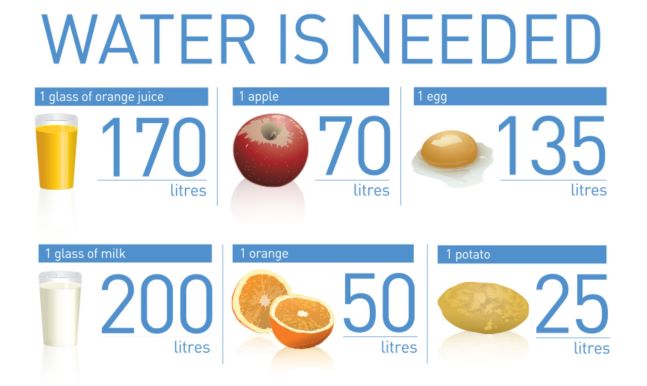
We all know the use of water for day to day lives like drinking, bathing, laundry but sometimes we forget that the food that we consume too needs a substantial amount of water to grow. While we are incessantly told to conserve water, a much less talked topic is that we can conserve water through food as well. You can do that if you know its Water Footprint.
Let us give you an example, a normal up of coffee that you daily or occasionally enjoy uses as much as 140 litres per serving. This goes for the entire sector, according to FAO estimates, Agricultural irrigation accounts for 70% of water use worldwide. In this meat and poultry are the most water-intensive food products, along with nuts. Just one kilo of bovine meat requires on average 15,415 litres of water.
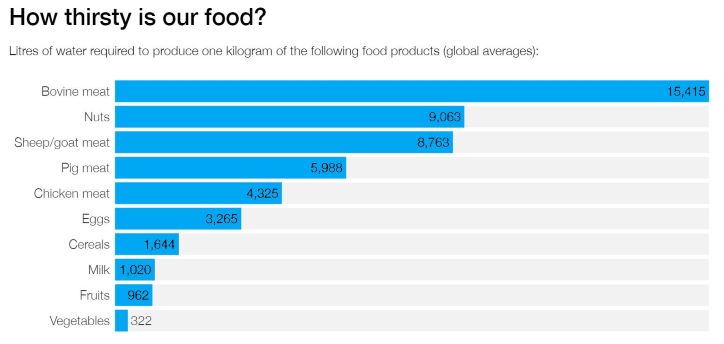
Fruits, on the other hand are less water intensive. For example, one apple uses 70 litres of water but the water footprint shoots up drastically to a 190 litres if it is turned into juice.
Per ton of product, animal products generally have a larger water footprint than crop products. The same is true when we look at the water footprint per calorie. The average water footprint per calorie for beef is twenty times larger than for cereals and starchy roots. When we look at the water requirements for protein, it has been found that the water footprint per gram of protein for milk, eggs and chicken meat is about 1.5 times larger than for pulses. For beef, the water footprint per gram of protein is 6 times larger than for pulses. In the case of fat, butter has a relatively small water footprint per gram of fat, even lower than for oil crops. All other animal products, however, have larger water footprints per gram of fat when compared to oil crops.
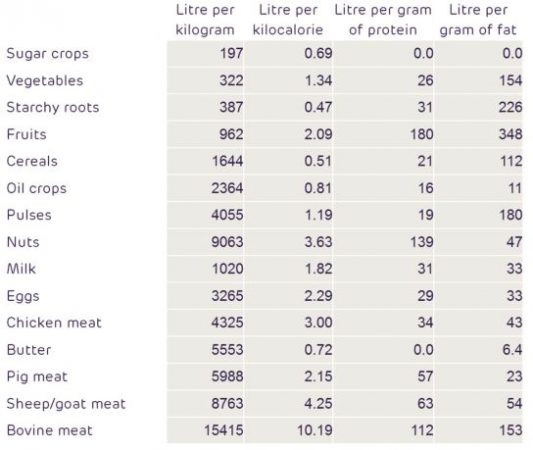
From a freshwater resource perspective, it is more efficient to obtain calories, protein and fat through crop products than animal products.
As various studies like that of WRI, some 9.8 billion people will inherit this earth which will drastically put immense pressure on its already depleting resources like freshwater. The World Economic Forum’s Global Risks Report 2019 ranks water crisis as the risk with the fourth largest impact. Exploitation of existing water supplies, a growing population and the impact of climate change are setting the world on course for a future where demand for water will exceed supply. Such a future could bring conflict and hardship as agriculture, energy, industry and households compete for water. While we are still working our way with Renewable energy, it would be wise for us to really think hard and reduce our food waste. Flagrant consumption of water-intensive crops and proteins will put unnecessary pressure on agriculturist to produce or cultivate them. One of the wise ways is to replace one non-veg meal each week with a vegetarian substitute. Dropping red meat from one meal a week could slash emissions eight percent, study shows. The results of the latest analysis echo scientific consensus on the contribution of animal agriculture to climate change. Now, it remains to be seen how many of us will make these changes. It remains unlikely that the entire population will suddenly embrace vegetarian lifestyles, but switching one or two meals a week appears to be an increasingly tenable aspiration – and one that would deliver significant emissions and water savings.


